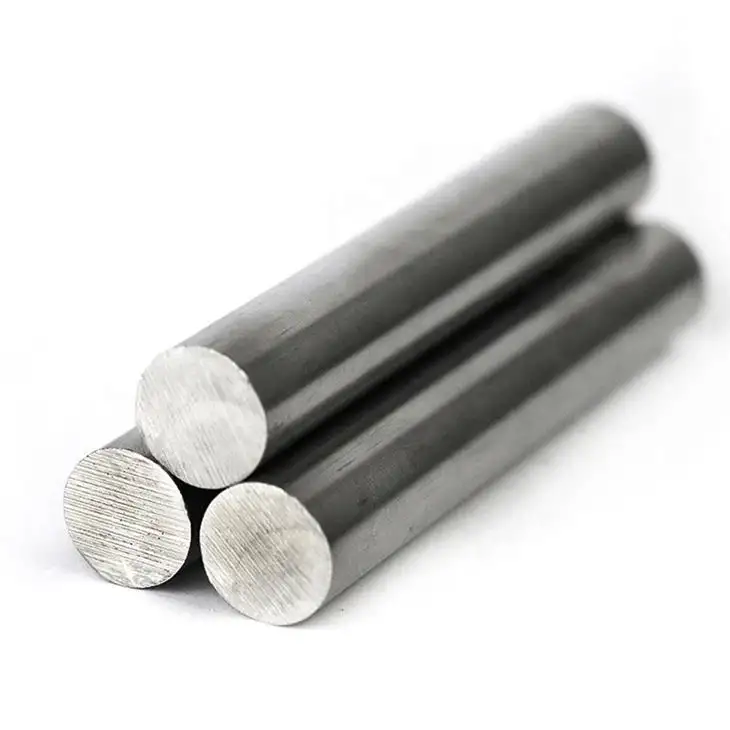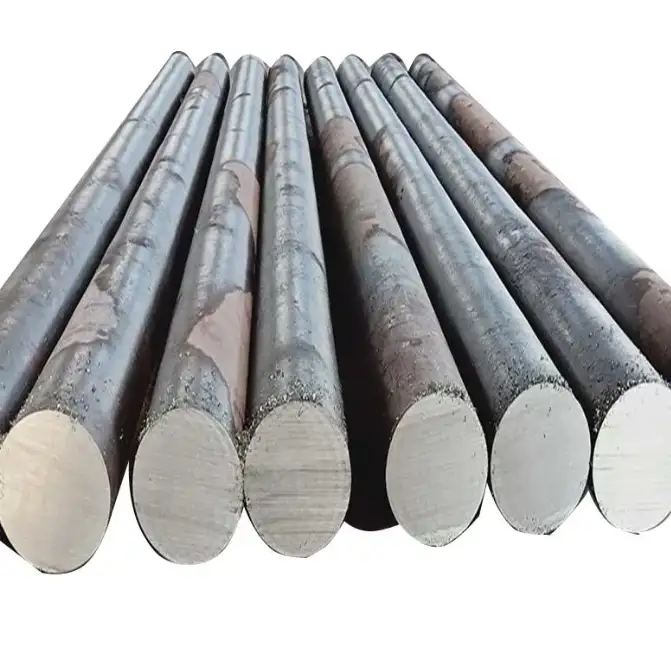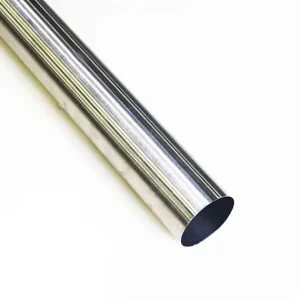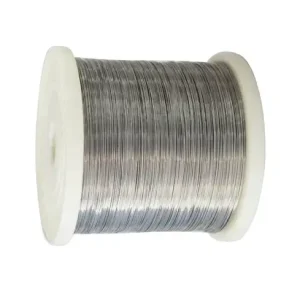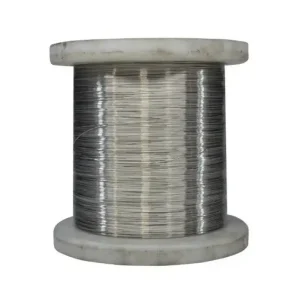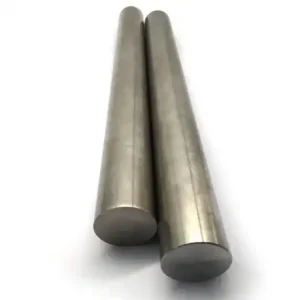T1 tool steel (also referenced as W18Cr4V, 1.3355, HS18-0-1 or SKH2) is a tungsten-based high-speed steel prized for exceptionally high hardness, excellent red-hardness (retention of hardness at elevated temperatures), and strong wear resistance — making it a first choice for cutting tools, drills, reamers, broaches and saw blades that operate at high cutting speeds and temperatures. In short: when an application demands an edge that holds under heat and abrasion, T1 is an economical, proven choice.
T1 (W18Cr4V / 1.3355 / HS18-0-1 / SKH2) sits in the tungsten family of high-speed steels. Compared with molybdenum types (M-series) it offers outstanding red hardness and edge life at high temperatures, but tends to be slightly less tolerant to shock. For many cutting tool manufacturers and re-grinders, T1 offers a cost-effective balance: excellent wear life at elevated cutting temperatures and good grindability. If your production is volume toolmaking or you need factory-gate prices for raw bars/plates, MWAlloys (MWalloys) supplies T1 at direct factory pricing with ready stock for standard sizes and rapid dispatch from China.
What is T1 tool steel?
-
Family: T-series high-speed steels (tungsten-based HSS). The “T” family historically predates many molybdenum (M) alloys and was the backbone of early high-speed cutting tools.
-
Primary role: maintain hardness and cutting performance at temperatures that would soften ordinary carbon or low-alloy steels (so-called “red hardness”).
-
Why tungsten: tungsten forms hard carbides and resists grain growth at high temperatures — this increases hot-strength and helps the cutting edge resist softening during high-speed machining.
Chemical composition
Below is the industry-accepted composition range commonly quoted for T1 / W18Cr4V / 1.3355 (AISI T1). Small variations happen between standards, vendors and production batches — always confirm certificate (COA) with final shipments.
| Element | Typical range (wt.%) |
|---|---|
| Carbon (C) | 0.65 – 0.80 |
| Manganese (Mn) | 0.10 – 0.40 |
| Silicon (Si) | 0.20 – 0.40 |
| Chromium (Cr) | 3.75 – 4.50 |
| Vanadium (V) | 0.90 – 1.30 (some specs up to ~1.7%) |
| Tungsten (W) | 17.25 – 18.75 |
| Nickel (Ni) | ≤ 0.30 (trace in some specs) |
| Copper (Cu) | ≤ 0.25 |
| Phosphorus (P) | ≤ 0.03 |
| Sulfur (S) | ≤ 0.03 |
(Sources: industry datasheets & technical summaries for T1 / W18Cr4V / 1.3355).
Notes on composition: tungsten (~18%) is the dominant alloying carbide former; chromium provides hardenability and corrosion/oxidation resistance; vanadium refines carbides and improves wear resistance and toughness; carbon controls carbide volume and hardness. Slight differences in vanadium content and minor traces will change grindability and wear behaviour.
Key physical & mechanical properties
| Property | Typical value / range |
|---|---|
| Density | 8.65 – 8.75 g/cm³ (≈ 0.313 lb/in³). |
| Hardness (annealed) | ~ 220–255 HB (varies by anneal process). |
| Hardness (quenched & tempered) | 62 – 66 HRC (commonly 63–65 HRC after correct heat treat). |
| Tensile strength (quenched & tempered) | 1,200 – 2,100 MPa (values reported in this wide band depending on condition; many suppliers quote ~1,750–2,100 MPa for H.T. parts). |
| Red hardness | Retains significant hardness up to 500–600 °C; typical HRC 57–63 at 500 °C depending on temper. |
| Thermal conductivity | ~ 20 W/m·K (lower than plain carbon steels due to alloying). |
| Modulus of elasticity | ≈ 200 GPa |
| Typical applications temperature | Effective up to ~550–600 °C for cutting edges (defined by application). |
(These are representative ranges drawn from several supplier datasheets and technical references for T1 / 1.3355.)
Specifications & equivalents (standards cross-reference)
T1 appears under multiple national standards. Typical equivalents:
| Common name | Standard references / equivalents |
|---|---|
| T1 | AISI/ASTM (often listed under ASTM/AISI designations for high-speed steels) |
| W18Cr4V | Chinese GB/T designation (W-series HSS) |
| 1.3355 | DIN/EN/ISO numeric (HS18-0-1) |
| HS18-0-1 | EN / ISO designator |
| SKH2 | JIS (Japanese) equivalent |
| BT1 / BT-1 | older British equivalents |
Standards & spec references: EN / ISO 4957 (high-speed tool steels) lists HS18-0-1 and cross references; many suppliers reference ASTM A600 or the appropriate national tool-steel tables for cross checks. Always request specific standard callouts on purchase orders (e.g., “supply T1 / 1.3355 to EN ISO 4957 condition annealed, mill test certificate EN 10204 3.1”).
Manufacturing forms, metal-working & molding processes
Typical supply forms: round bars (rod), flat bars/strips, plates, blanks/blocks, ground bars, and pre-hardened machined blanks. Common diameters and thickness ranges are wide (small rods for drills up to large bars for broaching tools).
Production routes:
-
Melting & refining: electric-arc furnace (EAF) plus ladle refining; many quality suppliers use Vacuum Degassing (VD) and Electroslag Remelting (ESR) for premium feedstock to reduce inclusions and improve toughness.
-
Casting & forging: ingots are cast, then forged and hot rolled to produce bars and plates. For premium tool steels, remelting (ESR) and controlled forging produce finer carbide distributions.
-
Heat/anneal: controlled anneal (for machinability) to a soft, uniform structure before finish machining; final hardening is done at toolmaker or by specialist heat-treat house.
-
Finish processes: cold drawing for bright bars, grinding to tolerance, shot blast or pickled finishes on plates. Many suppliers offer annealed (soft) or pre-hardened and ground options.
Metal moulding process (for die/tool blocks): T1 can be delivered as forged or precision-forged blanks, then finish-machined. Powder-metallurgy (PM) HSS is a different route (e.g., PM-M2, PM-M42); T1 is typically wrought (ingot → forge → bar). For tooling needing very homogenous carbide distribution, ESR and PM processes are preferable.
Heat treatment & hardening (practical guidance)
Typical heat-treat sequence (general guidance; always test on coupons):
-
Pre-heat / stress relief: ramp slowly to avoid cracking (e.g., 550–700 °C) to remove machining stresses.
-
Austenitizing / hardening temperature: ~1,220–1,280 °C (1270–1285 °C is commonly quoted by suppliers for W18Cr4V) — atmosphere or vacuum furnaces recommended to avoid decarburization.
-
Quench: oil or air quench depending on section size and desired properties; controlled cooling recommended to avoid cracking.
-
Tempering: double or triple tempers at ~540–560 °C (some schedules use 540–570 °C) to reach final HRC in the 62–66 range. Multiple tempers reduce retained austenite and stabilize dimensional change.
Key points & cautions:
-
T1 is less forgiving of thermal shock than some cold-work grades; avoid overly rapid temperature swings for thick parts.
-
Use protective atmospheres or vacuum to avoid surface decarburization/oxidation at high austenitizing temps.
-
Grinding and finishing are normally done after tempering to avoid microcracking.
Typical uses (where T1 excels)
-
Cutting tools: twist drills, reamers, taps, milling cutters for medium-to-high speed applications.
-
Circular saw blades and slitting tools (where red hardness is important).
-
Broaches, broach blanks.
-
Forming and cutting tools for automotive and general engineering steel production where surface abrasion and heat are present.
-
Cold-forming and drawing tools (selected geometries).
T1 is a workhorse grade for classic HSS tooling, especially where cost sensitivity and red-hardness are both required.
T1 steel Sizes & weight (how to estimate)
Density: use 8.67 g/cm³ (typical). Example quick-reference weights:
-
Round bar weight (kg/m) = π × (D²/4) × density (g/cm³) × (1e−3 to convert)
For D = 20 mm: area = π×(0.02²)/4 = 3.1416×0.0004/4 = 0.00031416 m²? — simpler to use formula:
Practical table (common sizes):
| Item | Size | Approx. weight |
|---|---|---|
| Round bar | Ø10 mm | ≈ 0.68 kg/m |
| Round bar | Ø20 mm | ≈ 2.73 kg/m |
| Round bar | Ø50 mm | ≈ 17.00 kg/m |
| Plate | 1000 × 1000 × 10 mm | ≈ 86.7 kg (10 mm × 1 m² × 8.67 g/cm³) |
(Use density 8.67 g/cm³ for calculations — multiply volume in cm³ by 8.67 to get grams.)
Note: always calculate from exact density and dimensions for quoting shipping weight.
T1 tool steel price comparison 2025
Important: HSS prices vary by form (raw bar, ground + annealed, machined blanks), quantity, surface finish and supplier. Below are indicative 2025 ranges compiled from distributor listings and Chinese factory FOB notices. Use them only as a planning guide — request firm quotations for procurement.
| Region | Typical 2025 indicative range (USD) | Notes / sources |
|---|---|---|
| China (factory FOB, standard T1 bars) | ~ $9 – $14 / kg (≈ $9,000 – $14,000 / tonne) | Several China B2B listings show FOB kg ranges around $12–13/kg for T1 rod; cost depends on diameter, finish, MOQ. |
| USA (distributor / small-qty ground stock) | ~ $8 – $25 / kg (higher per-kg for small ground/precision pieces) | US distributor pages & material marketplaces show retail prices for small pieces and saw blades from ~$150 each and HSS kg-level quotes that vary widely; finished tool stock increases unit price. Use distributor quote for specific forms. |
| Europe (mill/EXW or distributor) | ~ $9 – $18 / kg (continent averages) | European hot-rolled and specialty HSS premiums trend above base steel; indices for base steel show lower numbers so HSS premium must be added. Industry pricing indices (MEPS / SteelBenchmarker) help track base steel. |
How to read this: China factory prices are typically the most competitive for bulk orders (tons). Small orders, pre-ground or precision bars in the USA/Europe show higher per-kg costs due to processing, inventory and distribution margins. Always request an EXW/FOB factory quote for MWAlloys if you plan bulk purchasing — we publish factory gate price lists on request and can offer stock priority for standard sizes.
Machining, grinding & toolmaking tips
-
Machinability (annealed): T1 in the annealed condition machines reasonably well with HSS or carbide tooling. Use stable machining parameters and keep cutting rates moderate.
-
Grinding (finish): T1 responds well to abrasive grinding due to a fine carbide distribution when properly remelted/treated. Use appropriate coolant and take light passes for final dimensions.
-
EDM & sharpening: EDM works fine for complex geometries. For resharpening, diamond wheels or vitrified CBN wheels produce best results on hardened T1.
-
Coatings: modern PVD coatings (TiN, AlTiN) can further extend tool life at high speeds; however proper substrate hardness and tempering must be in place before coating.
-
Tool design: avoid thin cross sections for large T1 components to reduce risk of quench cracking; design tempering allowance and machining stock.
Inspection, traceability & quality control
-
Certificates: insist on EN 10204 3.1 mill test certificates for chemical composition and heat-treatment reports for critical orders.
-
Non-destructive checks: ultrasonic or magnetic particle inspection for large forged blanks when fatigue life is critical.
-
Carbide analysis: micrograph tests or optical microscopy to check carbide distribution (especially for ESR/PM vs conventional ingot material).
-
Hardness & dimensional testing: perform hardness mapping and dimensional checks on critical tool features post-tempering.
Why choose MWAlloys?
As MWAlloys (MWalloys), we supply T1 / W18Cr4V / 1.3355 in standard and custom sizes with the following advantages:
-
Factory-direct pricing: we operate as a manufacturer/authorized stockist in China — typical offers are 100% factory gate price for bulk orders. (Contact us for EXW / FOB quotes.)
-
Inventory: standard round bars, flats and plates kept in stock for fast dispatch; custom machining and pre-grinding services available.
-
Quality: we supply with mill certificates (EN 10204 3.1), and optional ESR or remelted feedstock for demanding applications.
-
Logistics: quick lead times from Chinese warehousing; consolidation and ocean/air freight options for the USA & Europe.
If you’d like, MWAlloys can provide sample bars and full COA for technical trials — reach out with required sizes and quantities.
FAQs
-
What’s the difference between T1 and M2?
T1 is tungsten-based HSS (excellent red hardness) while M2 contains molybdenum (and some tungsten) and typically offers a slightly better balance of toughness & wear; M2 is often chosen for general high-speed tooling while T1 is chosen where tungsten’s particular red-hardness properties are preferred. -
Can T1 be welded?
Welding high-speed steels is specialized; T1 can be welded with proper pre-heat, controlled heat input and post-weld heat treatment, but welding may degrade tool properties. For tool repairs, brazing or specialist weld fillers are often used. -
What final hardness can I expect?
After correct quench & temper cycles, 62–66 HRC is typical for cutting tools made from T1. -
Is T1 suitable for high-speed steel drills used on stainless steel?
Yes, T1 retains hardness at elevated temps, but for very abrasive or tough stainless alloys a cobalt alloy (M35/M42) or PM-HSS may perform better depending on cutting speeds. -
Do you provide pre-hardened ground bars?
Yes, MWAlloys supplies annealed and pre-hardened ground bars to customer tolerance on request. -
How do I specify the standard on a PO?
Use a combined callout: e.g., “T1 / W18Cr4V / 1.3355 — EN ISO 4957 — supply as annealed — MTC EN 10204 3.1”. -
What forms are easiest to grind after heat-treat?
Ground and tempered bars with fine carbide distribution (ESR remelted feedstock) are best for precision grinding and small-tolerance tools. -
How to choose between T1 and PM-HSS?
For large series or extreme wear at high temps, PM-HSS (powder metallurgy) often outperforms conventional wrought T1, but PM grades are costlier. For traditional HSS tooling with good economy, T1 is often preferred. -
What's the shipping lead time for standard bars?
For MWAlloys stock items: typically days to a couple of weeks depending on size and order size. For full production lot/ESR feedstock: lead times vary, ask for firm delivery times on quote. -
How to test whether received material is genuine T1?
Ask for the COA (chemical composition + heat-treat), verify composition by spectro analysis (OES), check hardness in multiple points and, if needed, request metallography to inspect carbides.

